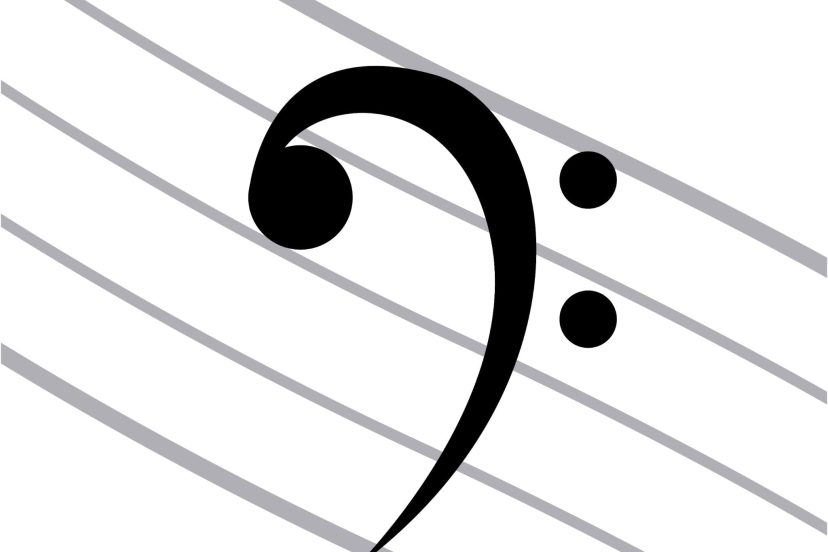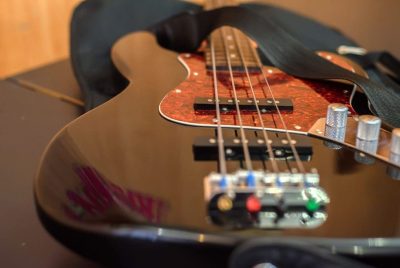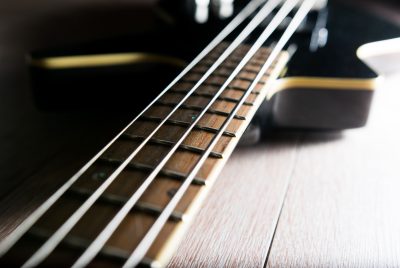Notes on a Bass Guitar: Be in the Know
Introduction
When it comes to mastering the art of playing the bass guitar, understanding the notes on a bass guitar is fundamental. Often considered the backbone of any musical ensemble, the bass guitar holds a unique position, blending rhythm and melody to create a rich auditory experience. Whether you’re an aspiring bassist or a seasoned player looking to refine your skills, grasping the nuances of bass notes is essential for enhancing your musical expression. In this article, we’ll explore essential tips and techniques that will not only help you navigate the fretboard with confidence but also elevate your overall playing style. Get ready to dive deep into the world of bass guitar, as we unlock the secrets to mastering your notes and adding depth to your music.
Understanding the Basics: Notes on a Bass Guitar Explained
Understanding the Basics of the bass guitar can seem daunting to newcomers, but grasping the fundamental concepts of notes on a bass guitar is an essential step in mastering this versatile instrument. The bass guitar typically has four strings, tuned to E1, A1, D2, and G2 from lowest to highest, and these strings provide the backbone for the harmonic structure of most musical genres. Each string has associated notes that correspond to various frets, allowing players to explore a wide range of musical possibilities and create deep, resonant rhythms that drive the music forward.
To fully comprehend notes on a bass guitar, one must start with the open string notes. The open E string is the lowest pitch and serves as an anchor point for beginners. As you press down on the frets, you produce different pitches. For instance, pressing the first fret on the E string produces an F note, while the second fret yields an F# note. This pattern continues up the neck of the guitar, with fret positions corresponding to half-step increments in pitch. Learning the location of these notes is crucial for developing muscle memory and enables bassists to navigate the fretboard with confidence.
As you progress, understanding octaves becomes essential in expanding your musical vocabulary. An octave occurs when you play the same note in a higher register, and this is easily achieved using the bass guitar. For example, if you play the open A1 string and then play the A note on the D string at the second fret, you are creating an octave jump. This knowledge allows bassists to create melodic lines and harmonies that add depth to a song—an essential skill for any player looking to enhance their musical contributions.
Ultimately, notes on a bass guitar are not just about individual pitches; they encompass a broader understanding of rhythm and timing as well. A bass player’s role often involves locking in with the drummer to create a tight groove, and knowing how to manipulate the notes at your fingertips can significantly affect the feel of a piece. By practicing scales, arpeggios, and various playing techniques, both beginners and seasoned musicians can unlock new creative avenues. Embracing the fundamentals of the bass guitar opens doors to expansive musical expression, ensuring that players can effectively communicate through their instrument.
Understanding Notes and Frequencies
Each note you play on a bass guitar is a particular frequency of sound. When you pluck a string without pressing any fret, that’s called an open string note. When you press down a fret and pluck the string, you’re shortening the length of the string, thus increasing the frequency and creating a different note.
Navigating the fretboard is like learning a new language. Notes on the Fretboard are your alphabet. Open Strings and Their Notes—E, A, D, G—are your first words in this new language.
The Four Strings and Their Notes
On a standard bass guitar, we have four strings. Let’s familiarize ourselves with the notes of these strings.
E String
- Tuning: The E string is the lowest pitched string on a standard bass guitar, tuned to the E note below middle C (E1).
- Thickness: It is the thickest string, typically ranging from .100 to .130 inches in diameter, depending on the specific set of strings used.
- Role in Music: This string provides the fundamental bass notes in many songs and is often used for playing root notes in various genres, especially in rock, blues, and jazz.
A String
- Tuning: The A string is tuned to the A note (A1), a perfect fourth above the E string.
- Thickness: Slightly thinner than the E string, its diameter usually ranges from .080 to .100 inches.
- Role in Music: It is versatile for playing both rhythm and melody. It’s often used for walking bass lines in jazz and for playing chords in some modern styles.
D String
- Tuning: The D string is tuned to the D note (D2), again a perfect fourth above the A string.
- Thickness: It has a diameter typically between .065 and .080 inches.
- Role in Music: This string is essential for playing higher-pitched bass lines and melodies. It’s widely used in slap bass techniques and for playing scales and arpeggios.
G String
- Tuning: The highest-pitched string, tuned to the G note (G2), a perfect fourth above the D string.
- Thickness: The thinnest, usually between .045 and .065 inches in diameter.
- Role in Music: It allows for playing higher registers and is often used for soloing and intricate melodic playing in genres like funk and jazz fusion.
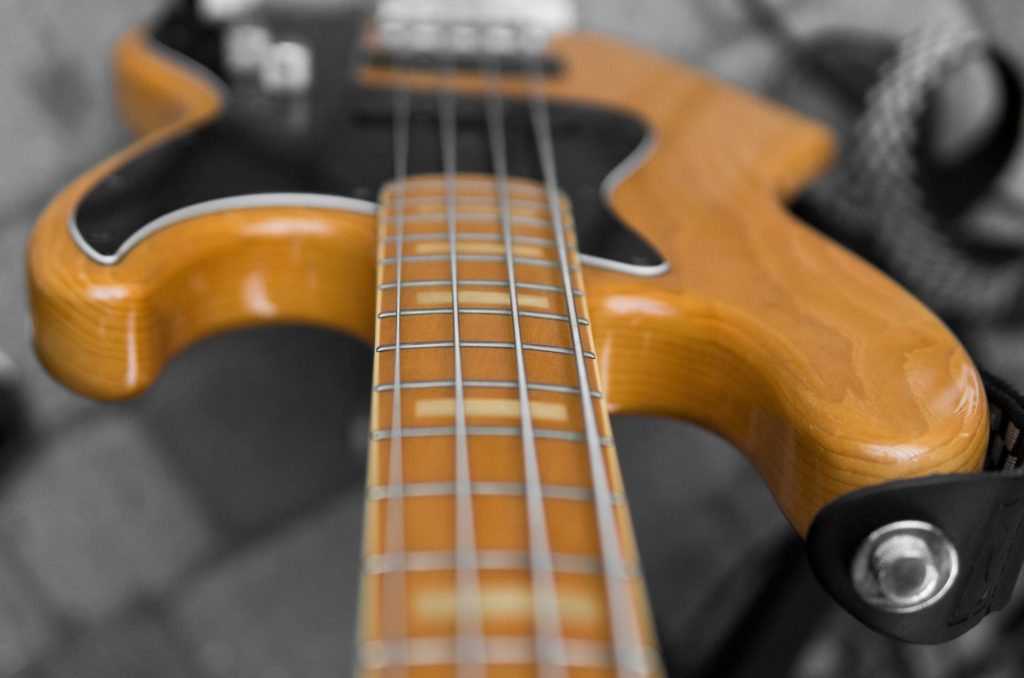
Essential Techniques for Mastering Bass Guitar Notes
Mastering the bass guitar is a rewarding journey that opens up a world of musical expression. One of the essential techniques for any aspiring bassist is learning the various notes on a bass guitar. Understanding the fretboard and the relationship between the notes is crucial for developing not only your playing skills, but also your ability to improvise and create. The bass guitar typically has four strings, tuned to E, A, D, and G, and each fret represents a half step increase in pitch. By familiarizing yourself with these notes and their locations, you’ll build a strong foundation that will support your musical endeavors.
An effective way to remember the notes on a bass guitar is by practicing scales and arpeggios. Major and minor scales create familiarity with the notes within different keys, while arpeggios help you understand chord structures. Regular practice of these scales, combined with visualizing their patterns on the fretboard, will enable you to navigate seamlessly between different notes. Use a metronome to gradually increase your speed, ensuring that accuracy is maintained as you become more comfortable with each scale.
Another vital technique for mastering bass guitar notes involves ear training. Developing your ability to identify notes by ear can enhance your overall musicianship and make it easier to jam with other musicians. Start by playing simple melodies and trying to replicate them without looking at your instrument. This exercise fine-tunes your auditory skills and enhances your connection to the music you play. Listening to various genres and focusing on the basslines can also provide insight into how professional bassists use different notes in their compositions.
Incorporating these techniques into your practice routine will elevate your proficiency with the bass guitar. Consistency, patience, and passion are key as you explore the vast landscape of musical possibilities. As you grow more comfortable with the notes on a bass guitar and continue to challenge yourself, you will find that the instrument becomes a powerful means of self-expression and creativity. Remember, each practice session brings you one step closer to mastery.
Unlocking the Fretboard: Navigating Notes on a Bass Guitar
Unlocking the fretboard of a bass guitar is a fundamental skill that every bassist should master to enhance their musical repertoire and improvisation abilities. Understanding how to navigate the notes on a bass guitar opens up a world of creativity and expression, allowing players to efficiently find their way around the neck and develop a deeper connection with the music they create. The bass guitar, with its four strings typically tuned to E, A, D, and G, provides a unique blend of rhythm and melody that is essential for driving any band’s sound.
To begin, it’s important to familiarize yourself with the notes on each string. Starting from the open E string, you can find the notes by moving up the frets: F at the first fret, F# at the second, and G at the third. This pattern continues up the neck and can be applied to all strings. As you practice identifying the notes, try to visualize the relationships between them. For example, recognizing that the note on the fifth fret of the E string is an A—one octave above the open A string—can help you navigate the fretboard more intuitively. This interconnectedness will come in handy when learning scales and arpeggios, as well as when playing with other musicians.
Another effective strategy for unlocking the fretboard is to practice scales and arpeggios in different positions. Major, minor, and pentatonic scales can be played all over the neck, providing not just knowledge of where to find each note on a bass guitar, but also improving your finger dexterity and overall fluidity. Additionally, learning the common patterns associated with these scales will help you hear and recognize melodies and harmonies more effectively. Applying this knowledge in practical contexts, like jamming with friends or recording, allows for real-time exploration of fretboard navigation.
Lastly, don’t overlook the importance of ear training in conjunction with your technical skills. As you become familiar with the notes on a bass guitar, listen closely to how they interact within different musical contexts. Play along with songs, focusing on identifying the notes and rhythms, and you’ll begin to develop a nuanced understanding of how to use your bass guitar to complement other instruments. The journey to unlock the fretboard is a continuous one, filled with discovery and growth, ultimately enriching both your playing and musical expression.
Tips for Memorizing Notes on a Bass Guitar
Memorizing notes on a bass guitar can seem like a daunting task, especially for beginners. However, with the right strategies and consistent practice, you can significantly enhance your ability to recall notes quickly and easily. One effective method is to familiarize yourself with the layout of your bass guitar’s fretboard. Start by identifying the notes on each string, remembering that the standard tuning from low to high is E, A, D, and G. Mapping out these notes visually and regularly will create a mental image that makes it easier to locate them during play.
Another useful technique for memorizing notes on a bass guitar is to combine auditory learning with visual recognition. Play the note on the guitar while simultaneously saying its name out loud. For example, when you play the open A string, vocalize “A” as you pluck it. This reinforces the connection between the sound and its corresponding note, making it stick in your memory. Try to isolate different sections of the neck and focus on memorizing one area at a time, gradually building your proficiency as you move across the fretboard.
Practicing scales and arpeggios can also be a significant aid in memorizing notes on a bass guitar. Not only do these exercises improve your technique, but they also reinforce the relationships between different notes. By playing through major and minor scales, you’ll become more aware of how notes are structured and connected, making it easier to recall them during your playing. These exercises can be done in various positions on the fretboard to further enhance your understanding and memory of where each note lies.
Lastly, consider implementing technology into your practice routine. There are numerous apps and online resources designed to help guitarists remember notes and improve their sight-reading skills. Many of these tools provide interactive quizzes and fretboard diagrams that can make the memorization process entertaining and engaging. Staying consistent with your practice and incorporating these tips into your routine will lead you toward mastering notes on a bass guitar, ultimately enhancing your overall musicianship and enjoyment of playing.
Enhancing Your Skills: Advanced Strategies for Bass Guitar Notes
Enhancing your skills on the bass guitar can be a rewarding journey, particularly as you delve deeper into the complexities of playing. Understanding how to effectively utilize notes on a bass guitar not only enhances your technical ability but also expands your creative expression. One advanced strategy is to familiarize yourself with the fretboard thoroughly. Memorizing the notes and their corresponding frets gives you the flexibility to navigate the instrument with ease, allowing you to improvise and create basslines that resonate with your musical vision.
Another key approach is the practice of interval recognition. By focusing on the distance between notes, you can develop a keen ear for musicality that goes beyond just playing notes. This skill is especially beneficial when jamming or collaborating with other musicians, as it enables you to anticipate chord changes and respond fluidly within a group setting. To sharpen this ability, incorporate ear training exercises into your routine, isolating different intervals and playing them on your bass. Over time, you will gain a much deeper understanding of how notes interact and can create more dynamic and engaging basslines.
Additionally, exploring various genres of music can significantly enhance your skills. Each genre has its own unique techniques and styles that can introduce new ways of approaching the instrument. For example, diving into funk may teach you about syncopation and groove creation, while rock might enhance your power chord transitions and speed. By studying the landmarks of different styles and incorporating them into your practice, you open yourself up to a broader palette of techniques to use when playing notes on a bass guitar.
Finally, don’t underestimate the power of recording your practice sessions. Listening to your playbacks allows you to critically assess your tone, timing, and overall musicality. This feedback loop is invaluable and can highlight areas for improvement that might not be apparent in the moment. As you progress, you’ll begin to understand your unique sound, helping you to refine your technique and develop a personal style that is distinctly yours. With dedication and the use of these advanced strategies, you’ll find yourself enhancing your skills and enjoying your bass guitar journey even more.
The Art of Bass Guitar: Perfecting Your Note Placement
The bass guitar, often regarded as the backbone of a musical ensemble, plays a crucial role in establishing rhythm and harmony. Mastering the art of bass guitar requires not only technical proficiency but also a keen sense of note placement. The way you position and articulate your notes can dramatically affect the overall sound and feel of a song. Bass guitarists must develop an ear for melodic structure and a deep understanding of how their lines interact with other instruments. This interplay is what transforms simple riffs into compelling compositions.
When it comes to perfecting your note placement, one of the essential skills is learning how to create space. Bassists often face the temptation to fill every measure with notes, but the true magic often lies in the pauses and the pockets between notes. By strategically employing silence and allowing chords to breathe, you can enhance the impact of your playing. It’s about finding that balance between groove and melody, ensuring that the bass guitar supports the song’s foundation while adding depth and character.
Additionally, understanding the fretboard and the scale positions is vital for effective note placement. For instance, knowing where the root notes lie relative to other chords can help you create bass lines that complement rather than clash. Developing a familiarity with the various modes and how they relate allows for greater creativity when improvising or crafting original lines. The right notes on a bass guitar can captivate listeners, drawing them into the rhythm and helping to fuel the overall energy of the music.
Ultimately, the art of bass guitar is about far more than playing the correct notes; it’s about connecting emotionally with the music. Engaging with the piece, feeling the dynamics of each section, and making intentional choices about where to place your notes can elevate your performance from standard to extraordinary. It takes time, practice, and a willingness to experiment, but by focusing on your note placement, you will find your unique voice on the bass guitar and enrich the musical tapestry you contribute to.
Common Mistakes to Avoid When Learning Bass Guitar Notes
Learning to play the bass guitar can be an incredibly rewarding experience, but it’s easy to fall into a few common pitfalls along the way. One of the first mistakes beginners often make is neglecting to familiarize themselves with the notes on a bass guitar. Many new players focus heavily on rhythms and techniques but skip over the vital foundation of understanding where notes are located on the fretboard. Taking the time to learn these notes will not only enhance your ability to read music but also improve your improvisation skills and overall musicianship.
Another common error is failing to practice scales and exercises consistently. Practicing scales is essential for building finger strength, dexterity, and familiarity with the notes on a bass guitar. Many learners underestimate the importance of this practice, thinking that simply playing along with their favorite songs is enough. However, without a solid grasp of scales, it can be challenging to transition smoothly through various musical styles or to create your own bass lines. Dedicating time to scale practice will help you unlock new levels of creativity and musical understanding.
In addition, many beginners overlook the importance of ear training. Learning to identify notes by ear is crucial for any musician, and this skill is particularly important for bass players who often provide the harmonic foundation of a song. Relying solely on visual cues from sheet music or tabs can hinder your ability to connect with other musicians and improvise confidently. Spending some time on ear training exercises can drastically improve your ability to pick up new songs, jam with friends, or compose original riffs.
Lastly, many learners become discouraged by the complexity of certain techniques, such as slap bass or harmonics. Instead of getting frustrated and giving up, it’s crucial to approach these techniques with patience and persistence. Start with the basics, gradually incorporating more advanced techniques as you gain confidence and skill. Remember, every great bassist started as a beginner, and the journey will be filled with both challenges and triumphs. By avoiding these common mistakes and focusing on foundational skills, you can set yourself up for long-term success in your bass guitar journey.
Essential Exercises to Master Notes on a Bass Guitar
Mastering notes on a bass guitar is crucial for any aspiring musician, as it forms the foundation for playing with precision and confidence. One of the most effective ways to familiarize yourself with the notes is through the use of scale exercises. Practicing major and minor scales will not only help you learn the layout of the notes but also improve your finger strength and dexterity. Start with the C major scale, which consists of the natural notes (C, D, E, F, G, A, B) and progressively work through other scales, shifting positions along the fretboard. This consistent repetition will engrain the notes into your muscle memory.
Another essential exercise is to integrate arpeggios into your practice routine. Arpeggios consist of the notes of a chord played in succession, which is a fun and effective way to expand your familiarity with notes on a bass guitar. Begin with simple triadic arpeggios, such as major and minor chords, and then incorporate seventh chords as you become more comfortable. This practice not only reinforces note recognition but also prepares you for various musical contexts where you’ll need to navigate chords smoothly.
Incorporating rhythmic exercises can also enhance your understanding of how notes function within different time signatures. Experiment with playing the same note in varying rhythmic patterns to solidify your timing and feel. For example, practice playing quarter notes, eighth notes, and sixteenth notes, while incorporating rests to create a diverse rhythmic exercise. This will help you interact better with other musicians and improve your improvisation skills as you become more aware of the relationship between rhythm and melody.
Lastly, consider using a combination of online resources, such as tablature, videos, and interactive apps, to supplement your practice. Many of these tools can provide visual aids that align with the notes on a bass guitar, making your learning process more engaging and effective. By consistently practicing scales, arpeggios, and rhythmic patterns, and utilizing various resources, you’ll not only master the notes on your bass guitar but also develop a deeper connection with the instrument and the music you love.
Taking Your Bass Guitar Playing to the Next Level: Advanced Note Techniques
Taking your bass guitar playing to the next level requires not just practice but also an understanding of advanced techniques that can elevate your sound. One of the most effective ways to enhance your playing is by exploring complex note techniques. Instead of sticking strictly to root notes or straightforward progressions, dive into methods like harmonics, slides, and double stops. These techniques can add depth and texture to your playing, while also allowing you to express yourself more freely through your instrument.
When discussing the nuances of advanced note techniques, harmonics are a fascinating area to explore. These ethereal-sounding notes are created by lightly touching the string with your finger while plucking it, allowing it to resonate in a way that produces a bell-like tone. Mastering harmonics not only broadens your sonic palette but also provides a way to understand the overtone series and how different notes on a bass guitar relate to one another. Utilizing harmonics in your bass lines can create an ambient sound that flows beautifully within a band, anchoring the sonic landscape while elevating the overall arrangement.
Another technique that many players find tremendously beneficial is the use of slides. Slides can connect notes in a way that adds fluidity and movement to your playing. By sliding between notes, you can create a sense of tension and release, which is especially effective in genres like jazz and funk. Incorporating slides into your practice routine will help you gain more control over your instrument and allow for a more expressive and natural performance. It’s about finding the right moments in a song to utilize this technique, creating a seamless interplay between rhythm and melody.
Lastly, consider experimenting with double stops, where you play two notes simultaneously. This technique not only enriches your sound but also turns your bass playing into a more melodic instrument. By combining different intervals, you can complement the harmonic structure of a song or even take the lead within a musical piece. As you continue to explore these advanced techniques, remember that practice is key. Work on integrating them smoothly into your existing repertoire, and soon, you will find that the notes on a bass guitar become not just sounds, but vehicles for your artistic expression.
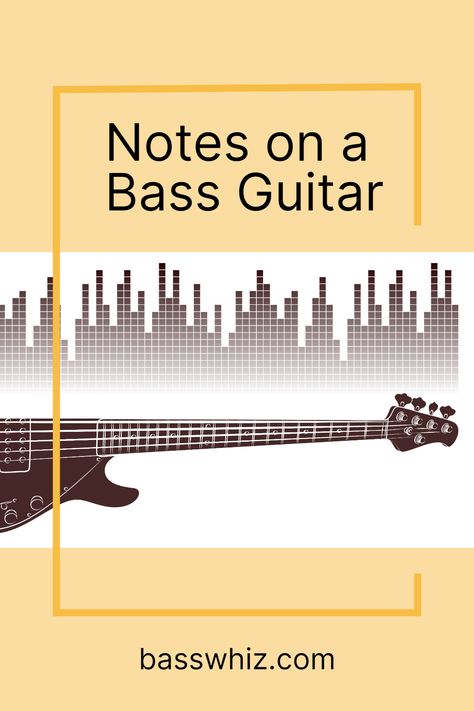
FAQs
1. How long does it typically take to learn the notes on a bass guitar?
This can vary greatly depending on your previous musical experience and how often you practice. With regular practice, most beginners can get a basic grasp of the notes in a few weeks to a few months.
2. Can I play songs without knowing the notes on my bass guitar?
Yes, it’s possible to learn songs by rote or by tablature without knowing the notes. However, understanding the notes will give you a much deeper understanding of the music and make it easier to learn new songs.
3. What is a good exercise for learning the notes?
Try playing scales up and down the neck of the bass guitar. This will not only help you learn the notes but also improve your finger dexterity.
4. Do I need to learn to read sheet music to understand the notes?
While it’s not strictly necessary, learning to read sheet music can enhance your understanding of notes and music theory.
5. Why do some bass guitars have more than four strings?
Some bass guitars have more strings to extend the range of the instrument. A five-string bass adds a low B string, while a six-string bass adds a high C string.

